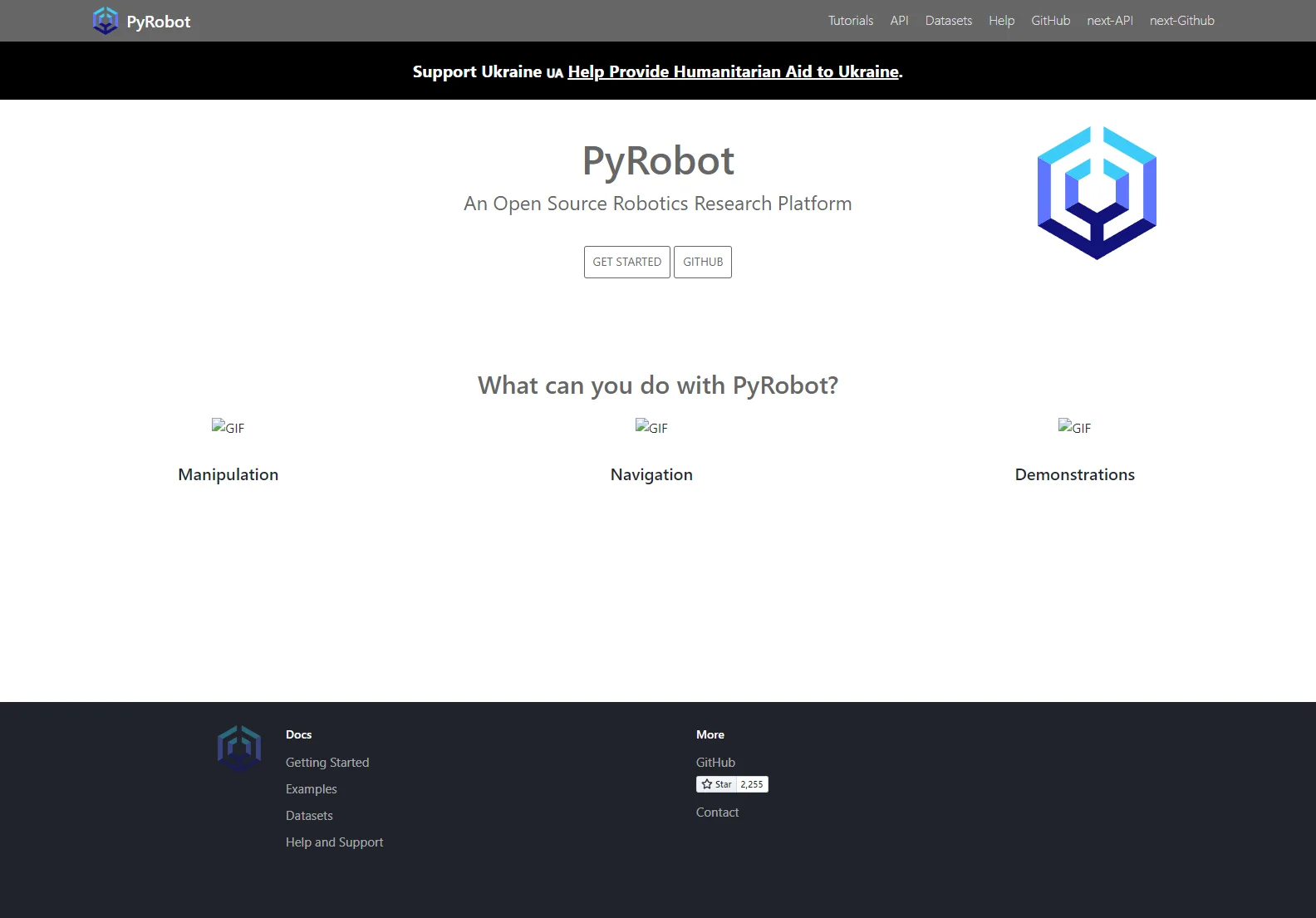PyRobot: An Open Source Robotics Research Platform
PyRobot is an open-source robotics research platform designed to simplify the process of developing and testing robotic algorithms. It provides a consistent and user-friendly interface for interacting with various robots, allowing researchers to focus on the core aspects of their research rather than getting bogged down in low-level implementation details.
Key Features
- Unified API: PyRobot offers a unified API across different robot platforms, making it easy to switch between robots without significant code changes. This promotes reproducibility and allows researchers to easily compare results across different hardware.
- High-Level Control: PyRobot provides high-level control interfaces for common robotic tasks such as manipulation and navigation. This simplifies the development process and allows researchers to quickly prototype and test their algorithms.
- Modular Design: The modular design of PyRobot allows researchers to easily extend and customize the platform to meet their specific needs. This flexibility is crucial for adapting to the ever-evolving landscape of robotics research.
- Extensive Documentation: Comprehensive documentation and tutorials are available to guide users through the process of setting up and using PyRobot. This ensures a smooth learning curve for both experienced and novice users.
- Open Source: PyRobot's open-source nature fosters collaboration and community involvement. Researchers can contribute to the platform's development, share their work, and benefit from the contributions of others.
Use Cases
PyRobot is suitable for a wide range of robotics research applications, including:
- Manipulation Research: Developing and testing algorithms for robotic manipulation tasks, such as grasping, object manipulation, and assembly.
- Navigation Research: Designing and implementing algorithms for robot navigation in various environments, including indoor and outdoor settings.
- Reinforcement Learning: Training robotic agents using reinforcement learning techniques to perform complex tasks.
- Computer Vision: Integrating computer vision algorithms to enable robots to perceive and interact with their environment.
Getting Started
Detailed instructions on how to set up and use PyRobot are available in the project's documentation. The documentation includes tutorials, examples, and API references to help users get started quickly.
Datasets
PyRobot provides access to various datasets that can be used to train and evaluate robotic algorithms. These datasets are carefully curated and provide a valuable resource for researchers.
Support
The PyRobot community is active and supportive. Users can find assistance through the project's GitHub repository, online forums, and other community channels.
Conclusion
PyRobot is a powerful and versatile open-source platform for robotics research. Its unified API, high-level control interfaces, and modular design make it an ideal tool for researchers looking to develop and test robotic algorithms efficiently. The platform's open-source nature and active community further enhance its value as a collaborative resource for the robotics research community.

